This pie crust recipe yields 2 single crusts or 1 double crust (crust with a full top or a lattice top). Not only is this homemade pie crust irresistibly delicious, it will seriously have everyone saying “This is gluten free & egg free? Wow!”
Plus, I’ll also show you my fool proof rolling & transferring technique, how to form a fluted pie rim and how to make a lattice pie crust top! Check out my follow-along video here!
I promise you’re going to fall in love with this easy flakey pie crust recipe that has a rich buttery flavour! With just 7 natural simple ingredients (NO SHORTENING HERE) this pie crust is not only free of gluten and eggs but also bursting with flavour and flakiness. With a vegan (dairy free) option, I hope absolutely everyone can enjoy an irresistible pie this holiday season!
This recipe is:
Why Making Your Own Is a Must!
Making your own gluten-free and egg-free pie crust offers a host of benefits that go beyond dietary restrictions. Here are some compelling reasons to whip up your own gluten-free and egg-free pie crust:
Tailored to Your Taste & Dietary needs: Control the ingredients, allowing you to tailor the flavour and texture to your liking. Experiment with different gluten-free flours, add a savoury spice for those incredible pot pies, and find the combination that suits your taste buds. Plus you can customize it to meet specific dietary needs, such as vegan or dairy-free requirements.
Healthier Ingredients & No Additives: Our homemade crust feature wholesome ingredients, providing a healthier alternative to store-bought options. You can choose high-quality, organic, and non-GMO ingredients, ensuring your pie crust aligns with your health goals. Some store-bought gluten-free and egg-free products may contain additives, preservatives, or stabilizers like xanthan gum. When you make your own crust, you have the assurance of using fresh, whole ingredients without unnecessary chemicals.
HAVE YOUR GUESTS SAYING "THIS GLUTEN & EGG FREE? WOW!"
- Cost-Effective & or Impossible to find: Purchasing pre-made gluten-free and egg-free products can be very expensive, if you can find one! Making your own crust allows you to save money while still enjoying a delicious, allergen-friendly treat.
- Versatility: Homemade gluten-free, egg-free pie crusts can be as versatile as traditional crusts. They work well with both sweet and savoury fillings, from classic fruit pies to savoury meat or veggie pot pies, giving you the flexibility to explore a variety of flavours.
Sense of Accomplishment: There’s a unique sense of accomplishment that comes with creating something from scratch. Making your own pie crust allows you to take pride in your baking skills and enjoy the satisfaction of serving a pie that you crafted with care.
We included Amazon affiliate links below to our favourite tools for making pie dough!
INGREDIENTS and EQUIPMENT NEEDED
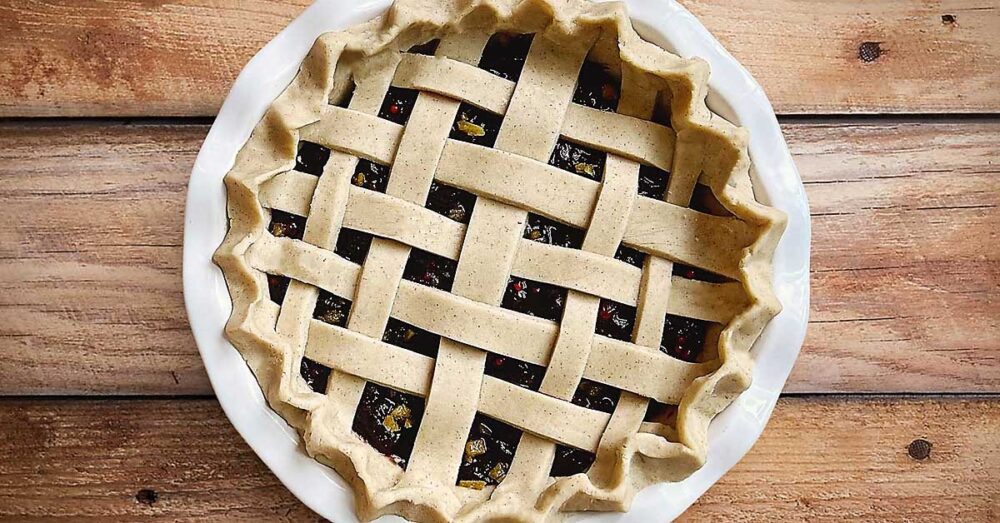
With these basic ingredients, it truly doesn’t get any easier than this! You may even have everything you need to make homemade pie dough already: a few gluten free flours, sea salt, cane sugar, chilled butter and aquafaba (literally just the liquid from a can of chickpeas, or as I like to call it a little bit of liquid magic for gluten free baking).
7 Simple INGREDIENTS IN GLUTEN FREE PIE CRUST
- 160g Sweet Rice Flour (make your own with me)
- 147g Sorghum Flour (aka Dewar Flour)
- 80g Tapioca Flour (aka Tapioca Starch)
- 3/4 tsp Sea Salt
- 267g Cold Unsalted Butter or Cold (solid)) Unrefined Coconut Oil (see my video for tips)
- 1 1/2 tsp (10g) Cane Sugar
- 110mL (7 1/2 Tbsp) Cold Aquafaba (liquid from a can of chickpeas aka garbanzo beans)
- 1 Vanilla Bean Pod (seeds) – Optional but perfect for dessert pies
- Food Processor (or pastry cutter)
- Plastic Wrap
- Parchment Paper
watch how to make gluten free pie crust (video)
See Trish make her go-to pie crust recipe. If you enjoy our videos, please subscribe to our cooking channel on Youtube so you will be the first to know when we post a new video!
4 Easy steps: gluten free pie crust
Step 1: Mixing the Dry Ingredients
Simply place the base of your food processor onto your scale and add the gluten free flours, cane sugar, salt (and optional vanilla bean). Give it a few pulses (5-6x) to ensure an even distribution of ingredients.
Step 2: Incorporating the Fat
Add the cold unsalted butter (or try vegan butter or solid coconut oil for vegan or dairy free) to the dry ingredients. Pulse 7-10x until the butter is broken into pea sized crumbs and is incorporated throughout. This step is crucial for achieving that coveted flakiness.
If using a pastry cutter, work the fat into the flour until it resembles coarse crumbs. You can do this step with your hands but I wouldn’t recommend it as our hands are hot and the butter will melt quickly. We want it to stay as cold as possible.
Step 3: Bringing it Together
Drizzle cold aquafaba over the mixture directly into the food processor. Pulse 20-25x until the dough JUST starts to come together. You want it to be moist enough to form a ball but not too sticky. Test by pinching a piece of dough and if it comes together then it is done! If it doesn’t come together, don’t add more liquid. Try pulsing a few more times and it should work. To much liquid will cause it to be sticky and it will be very hard to roll out!
If you’re trying the dairy free (and vegan) option, add the aquafaba a little at a time until you reach the correct consistency. Try not to add more liquid until you are sure it needs it.
Step 4: Forming the Dough
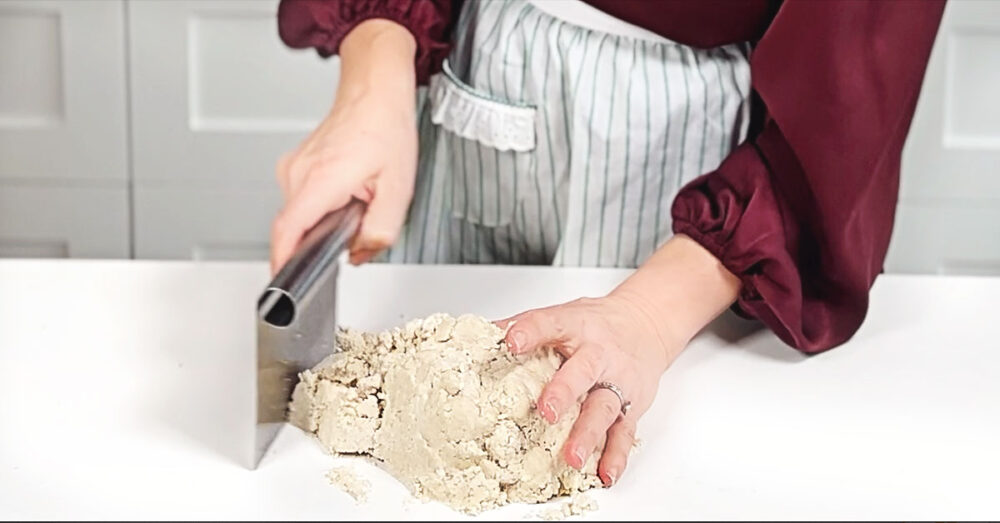
- Transfer the dough onto a piece of parchment paper or a stone countertop and gently press it into a ball. Make sure to RESIST THE URGE TO CONTINUE KNEADING. The urge is real, I know, but you just need to bring the dough together, it should not be smooth. This will contribute to the flaky crust. If you overwork it, you will lose some of the flaky texture once baked.
- Split the dough depending on what type of pie crust you’re making:
- Single Crust: 2 equal pieces (makes 2 crusts).
- Crust with lattice top: Cut into 2 pieces – 1 slightly larger piece for the base and 1 slightly smaller piece for the lattice top.
- Double Crust: 2 equal pieces.
- Flatten each piece into a disc, wrap it in plastic wrap, and refrigerate for 1 hour. This chilling time allows the fats to solidify, contributing to the crust’s flakiness, so don’t skip this step.
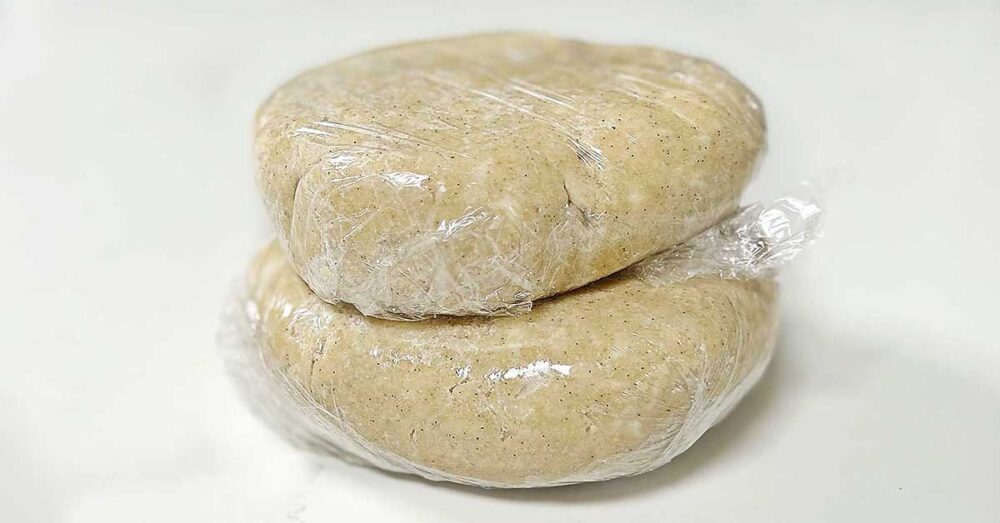
HOW TO ROLL OUT AND TRANSFER DOUGH to a pie dish
Tips for Rolling out the Dough
Once chilled, place the dough either between two sheets of parchment paper, or my preferred method, on one piece of parchment and cover with plastic wrap. The dough will seem very hard once removed from the fridge, it will slightly soften. Just let it rest covered for 5 minutes.
Roll it out to your desired thickness or until your dough is about a 12″ diameter circle (This is the perfect size for my 10″ ceramic pie dish.
Don’t be discouraged if the dough seems to crack at points; simply patch it together as you go by gently massaging with your fingers (on top of plastic wrap). Avoid touching the dough directly with your hands at this point as it may stick a bit.
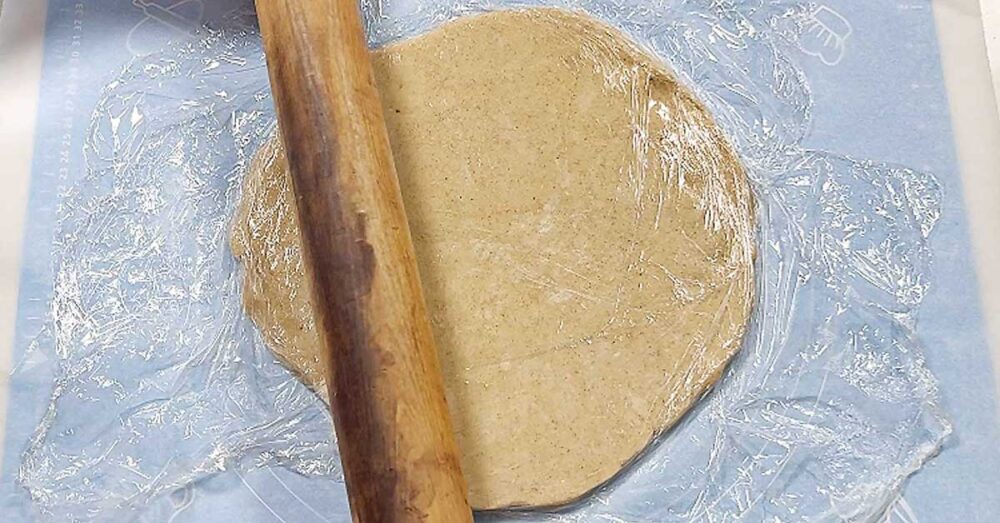
Tips for Transferring the Dough to a pie plate
Carefully lift rolled out pie dough on parchment paper and invert the crust into your pie pan. Gently lift the edges to allow the sides to fall into place. Don’t stretch the dough. Gently press it into place, patching any cracks or tears with your fingers.
Fold over the edge back under itself to create a lovely straight, smooth edge (no waste this way). Alternately, use kitchen scissors to trim the excess dough around the edges leaving a straight edge about 1/2″ to 3/4″ overhang. Save any excess dough to use for lattice top if your making one or even to cut out shapes with a cookie cutter to dress up your pie.
HOW TO FLUTE A PIE CRUST
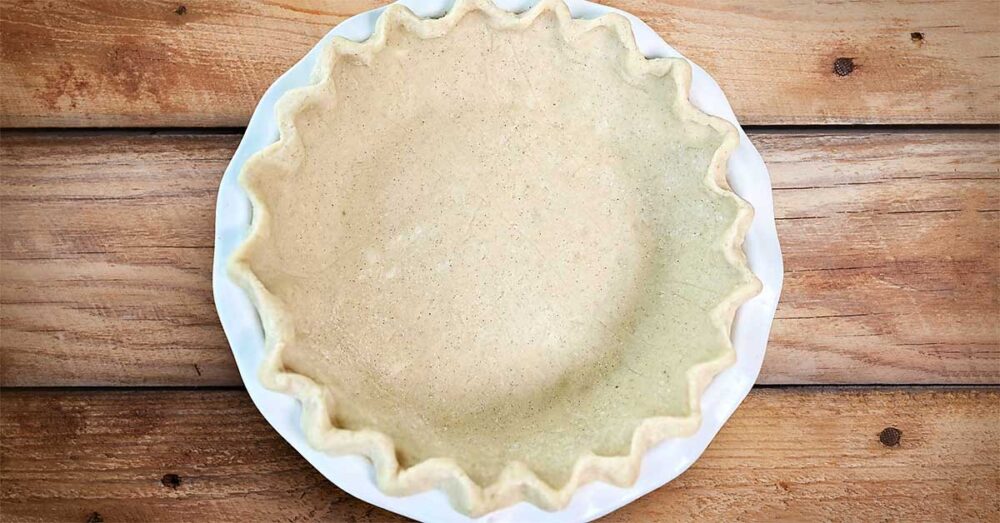
Fluting a pie crust is the decorative crimping or pinching of the edges of the crust to create a visually appealing, inviting and traditional finish. Enjoy the process and the beautiful result! Check out my step-by-step guide on how to flute a pie crust.
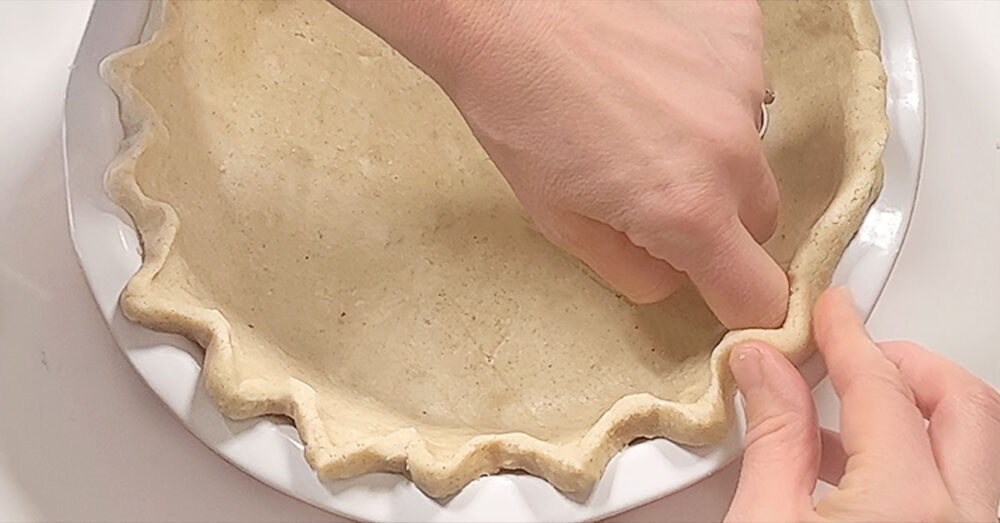
HOW TO "BLIND BAKE" (PRE-BAKE) A GLUTEN FREE PIE CRUST
Blind baking a gluten-free pie crust helps ensure that the crust is fully cooked and maintains its structure, especially when the pie filling requires less baking time or has been pre-cooked. Here’s a step-by-step guide on how to blind bake a gluten-free pie crust:
Prepare & Chill the Gluten-Free Pie Crust:
- Follow the above directions to prepare your gluten-free pie crust and press the dough into the pie dish.
- Place the pie crust in the refrigerator for at least 30 minutes. Chilling helps prevent the crust from shrinking during the blind baking process.
Preheat the Oven:
- Preheat your oven to 400°F (205°C)
Prep the Crust for Blind Baking:
- Remove the chilled pie crust from the refrigerator.
- Line the crust with parchment paper, making sure it covers the entire surface and edges. Allow the excess parchment paper to hang over the sides.
Add Pie Weights or Substitutes:
- Fill the lined crust about 2/3 of the way with pie weights, dried beans, or rice. These weights will help prevent the crust from puffing up during baking.
- Make sure the weights are distributed evenly across the bottom of the crust and press them gently against the sides.
Blind Bake:
- Bake the crust in the preheated oven for 15-20 minutes for a partially baked crust.
- Check the crust halfway through the baking time to ensure even cooking. If you notice any areas puffing up, gently press them down with a fork.
Remove Pie Weights:
- Carefully remove the parchment paper and weights from the crust.
Continue Baking (Optional):
- If your wanting a fully baked crust, return the crust to the oven for an additional 5-10 minutes or until it is golden brown. Keep an eye on it to prevent over-baking.
Cool Completely:
- Allow the blind-baked crust to cool completely before adding your desired filling.
Tips:
- Save the parchment paper and weights or beans for future blind baking sessions. This prevents waste as they can be used over and over!
- Depending on the pie dish you are using you may require slightly longer or shorter blind baking times, so keep an eye on the crust to avoid overcooking. Metal pie plates heat and cool much faster than ceramic or glass. My recipe is for baking in a ceramic pie plate.
Frequently asked questions
Do I have to use a Food Processor?
I highly recommend using a food processor for ease and time saving. You don't need a fancy one though, any type will work. However, you can also use a pastry cutter or even a fork to incorporate the fat it will just take a lot longer. Try and avoid handling the dough with your hands as much as possible.
Why is my dough SO hard?
When you first remove your dough from the refrigerator you might think oh no, it's as hard as a rock! Especially if you have refrigerated it for longer than 1 hour. Don't worry, let it rest for 10-15 minutes on the countertop (still in plastic wrap) and it will be the perfect consistency to roll out. Make sure it is still cool though as we want to try and keep those fats in solid form until we cook our pie!
Can I make this crust ahead of time?
Yes you sure can! In fact, I highly recommend it for busy occasions, holidays, or whenever you want to enjoy a homemade pie with minimal effort. Whether refrigerated or frozen, having the dough ready allows you to focus on the fun part – creating delicious fillings and savouring the joy of baking.
Making Gluten-Free Pie Crust in Advance:
Prepare the Dough: Mix the ingredients and forming the dough as instructed above.
Shape and Wrap: Shape the dough into a disk, wrap it tightly in plastic wrap, then seal in a air-tight container or Ziplock bag and refrigerate.
Refrigerate or Freeze: Depending on when you plan to use the crust, you have two options:
Refrigeration (Short-Term): If you intend to use the crust within a few days, store it in the refrigerator. The dough can typically be refrigerated for up to 2-3 days.
Freezing (Long-Term): For longer storage, place the wrapped dough in an airtight container or a heavy-duty freezer bag, label it with the date, and freeze. Gluten-free pie crust dough can be frozen for several weeks. My favourite thing to do is make a double batch and freeze some dough for when the pie craving hits or we are hosting a dinner.
How to use frozen pie dough
Using Refrigerated or Frozen Gluten-Free Pie Crust Dough:
Thawing: If the dough has been frozen, transfer it to the refrigerator the night before you plan to use it. Thawing in the refrigerator helps maintain the texture of the crust.
Rolling and Baking: Once the dough is sufficiently thawed but still chilled, roll it out as described above. Depending on the type of pie you're making a you may chose to blind bake the crust.
Filling and Baking: Add your desired filling and proceed with baking according to your recipe.
Tips:
Label and Date: When freezing, always label the container with the type of dough and the date to keep track of freshness.
Consistency Check: Before rolling out the dough, allow it to come to a slightly pliable consistency by resting on the counter. This ensures easier handling and a more even crust.
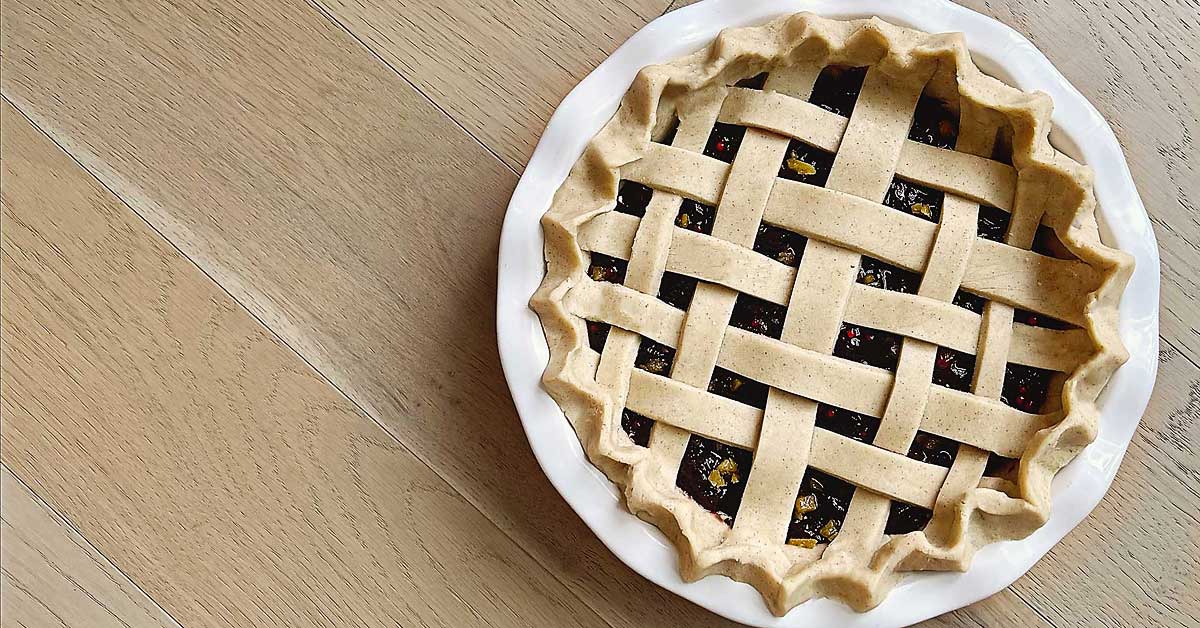
pie recipes to try with this fabulous gluten free pie crust
I am working hard to get all of my families favourite pie recipes added to my website. Coming soon you’ll find links to:
- Cherry Ginger Spice Pie – a tasty twist on a classic original
- Classic Apple & Cinnamon Pie
- Chicken Pot Pie
- Veggie Coconut Curry Pie
- Mini pies for a hot lunch
- How to make a lattice top for your pie – it is so easy!
Make your favourite pie Gluten Free this holiday season!
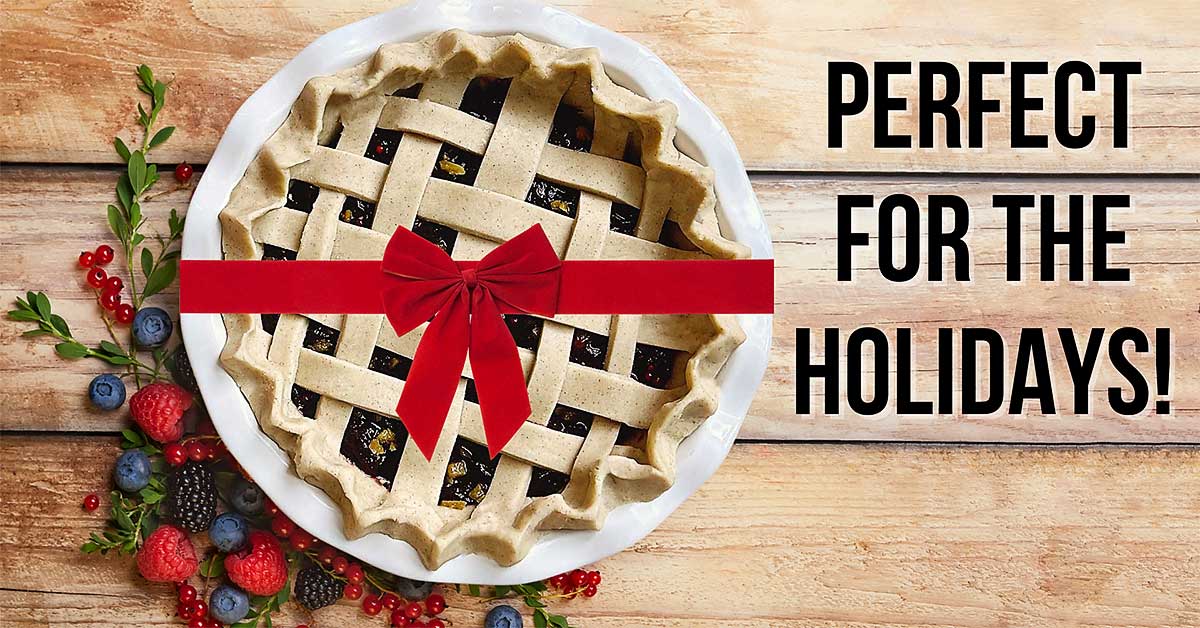
BRING THE PERFECT DESSERT!
If you are heading to a loved ones for the holidays, and have someone living with dietary restrictions, they will be absolutely tickled! Just this small effort will truly mean the world to your loved one, the perfect gift!
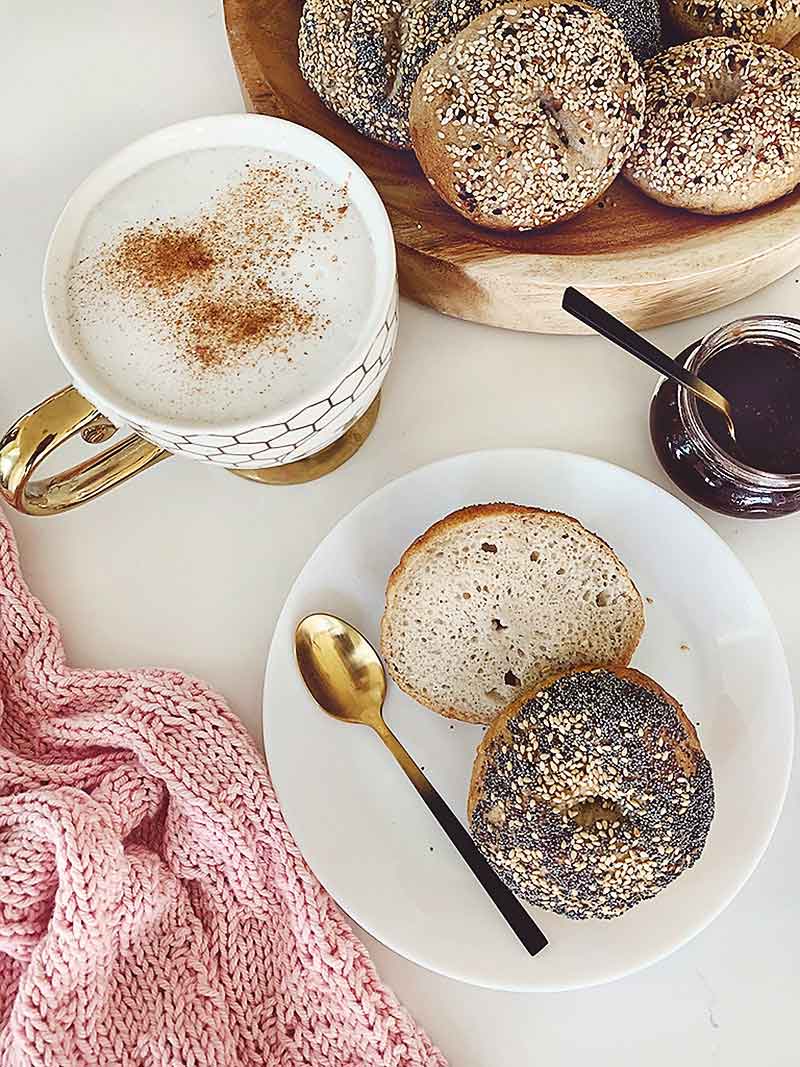
Want more delicious recipes & or how to guides at your fingertips?
Get updates on our latest posts & recipes from TurmericMeCrazy straight to your inbox!
By clicking subscribe you are consenting to receive emails from TurmericMeCrazy. I will only email you monthly with new recipes & updates. No spam I promise!
Pay It Forward
please share
I hope you LOVE this gluten free egg free pie crust as much as we do! My goal is that absolutely everyone can enjoy a piece of pie no matter what their dietary needs! No holiday is the same without pie right!
If you enjoy it, please share the link to this page on your social media or PIN this picture to your Pinterest account.
As always thank you in advance for subscribing to my blog & YouTube Channel as well as following me & liking my posts on Pinterest, FaceBook & Instagram! Comments and Ratings on my recipes & social media really helps support me! So thank you ever so much.

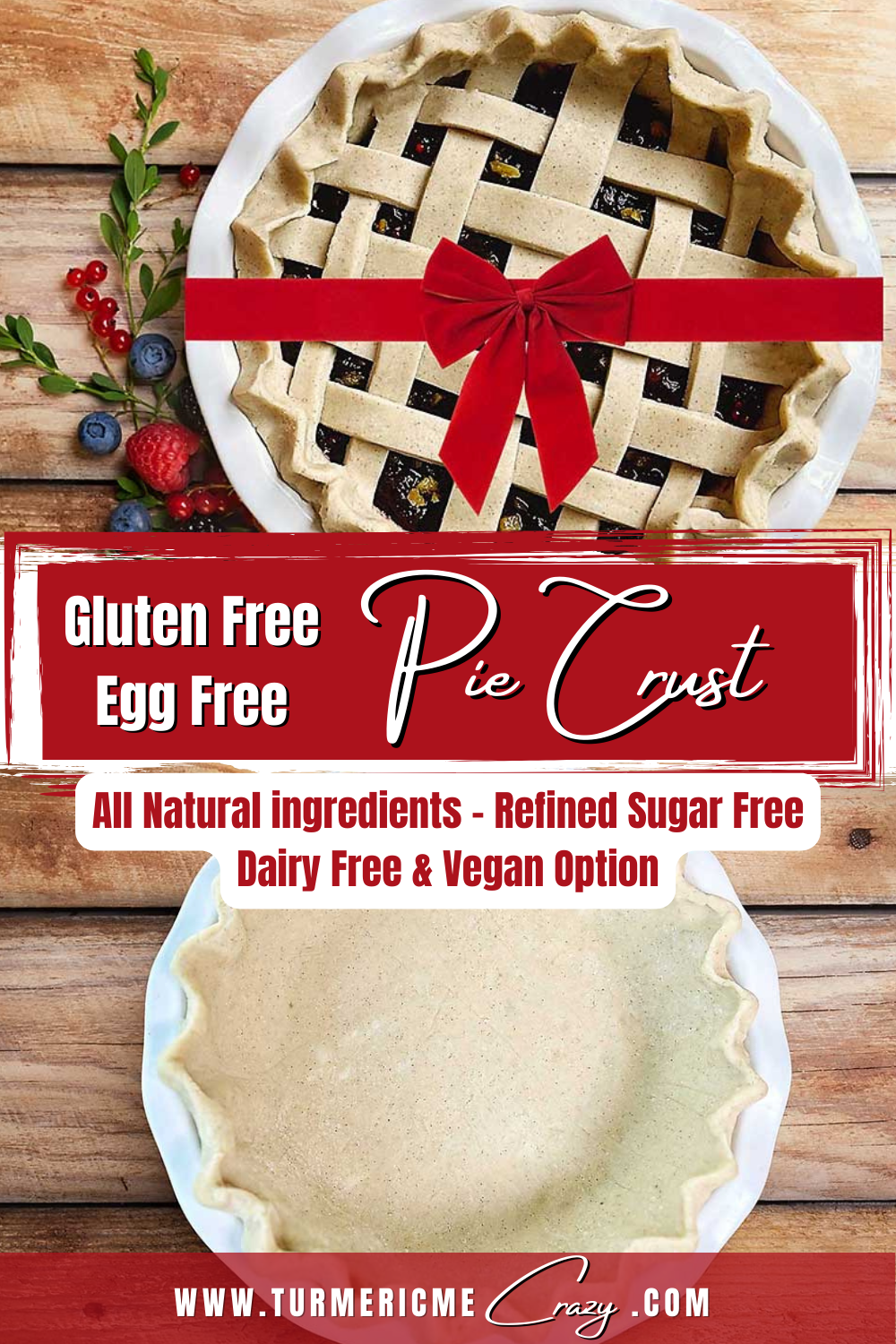
PLEASE RATE & COMMENT
If you try making this easy pie crust recipe and you found this guide helpful, I’d be ever so grateful if you’d please add a comment & a rating onto the recipe below or at the bottom of the post ♡. This will help Google recognize it and help my website grow.
Thank you once again for your readership & support.

Easy Gluten Free Pie Crust Recipe
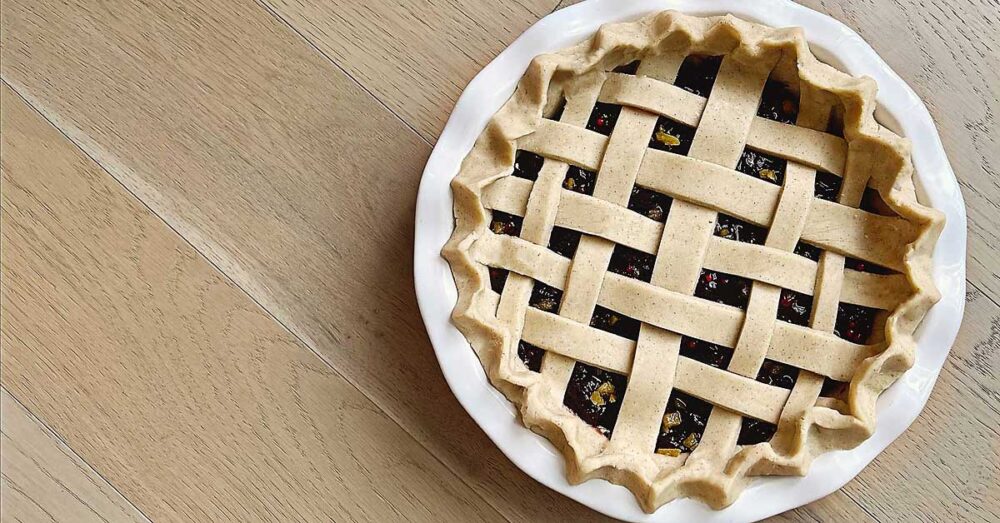
Easy Gluten Free Pie Crust - Egg Free with Dairy Free & Vegan Option
Equipment Needed
- 1 Food Processor recommended but can use a pastry cutter
- Plastic Wrap
- 1 Air Tight Container
- 1 Rolling Pin *if making pie
- 1 Pie Plate *if making pie
INGREDIENTS
- 160 g Sweet Rice Flour
- 147 g Sorghum Flour aka Jowar Flour
- 80 g Tapioca Starch aka Tapioca Starch
- ¾ tsp Sea Salt
- 1 ½ tsp Cane Sugar
- 267 g Cold Unsalted Butter, cubed *see notes for dairy free & vegan
- 110 mL Aquafaba, cold
- 1 seeds Vanilla Bean, seeds from *optional
INSTRUCTIONS
Step 1: Mix the Dry Ingredients
- Measure all dry ingredients directly into bowl of food processor. If using vanilla beans, rub them into sugar before adding.160 g Sweet Rice Flour, 147 g Sorghum Flour, 80 g Tapioca Starch, 3/4 tsp Sea Salt, 1 1/2 tsp Cane Sugar
- Pulse on high 5-6 times
Step 2: Incorporate the fats
- Add cubbed cold butter (or cubbed cold, solid coconut oil) into food processor & pulse 7-10 times until fat has broken down into pea sized pieces. DON'T mix more than needed.
Step 3: Bringing it together
- Drizzle cold aquafaba over the mixture directly into the food processor. Pulse 20-25x until the dough JUST starts to come together. You want it to be moist enough to form a ball but not too sticky. Test by pinching a piece of dough and if it comes together then it is done! Do NOT over mix. See note post above for more details and pictures.
Step 4: Forming the dough
- Transfer the dough onto a piece of parchment paper or a stone countertop and gently press it into a ball. Make sure to RESIST THE URGE TO CONTINUE KNEEDING. Just need to bring the dough together, it should not be smooth.
- Flatten each piece into a disc, wrap it in plastic wrap, and refrigerate for 1 hour. Don't skip this step.
- Split the dough depending on what type of pie crust you're making:Single Crust: 2 equal pieces (makes 2 crusts). Crust with lattice top: Cut into 2 pieces - 1 slightly larger piece for the base and 1 slightly smaller piece for the lattice top.Double Crust: 2 equal pieces.
- You're ready to use this lovely pie crust for to bake your favourite pie!
Video
Notes
- Use Coconut Oil to replace the cold cubbed butter. Please watch my video above for an easy tip to help keep your coconut oil solid and easy to use for this recipe!
Nutrition
ARE WE CONNECTED YET?
OTHER DELICIOUS RECIPES TO TRY...
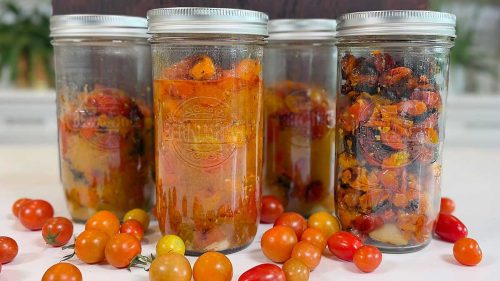
How to Fire Roast Tomatoes – easily preserve tomatoes
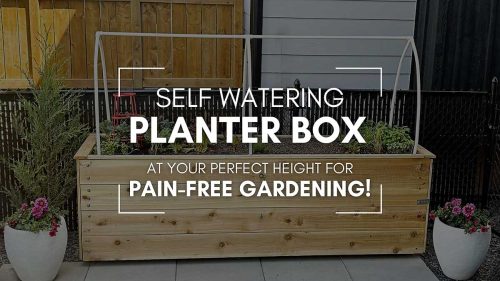
DIY Self-Watering Raised Planter

Creamy salmon pasta with green beans and spinach – dairy free!
Using Air-Dry Clay With Decorative Moulds – Beginner’s Tips & Tricks

How to Manage and Style Thick, Coarse, Frizzy Hair!
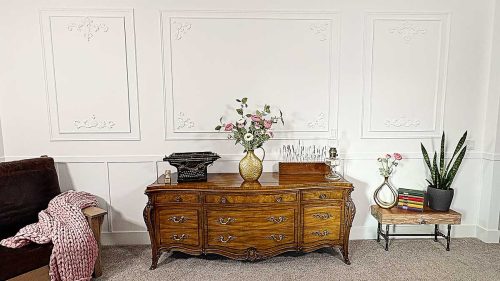
How to make French Inspired Wall Panels

How to remove paint from carpet
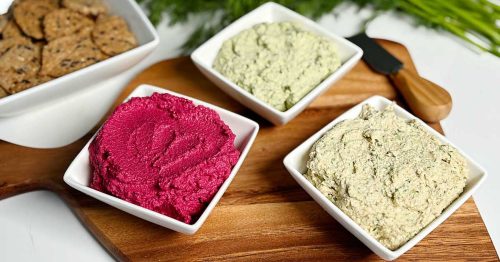
3 Irresistible Cashew Dips
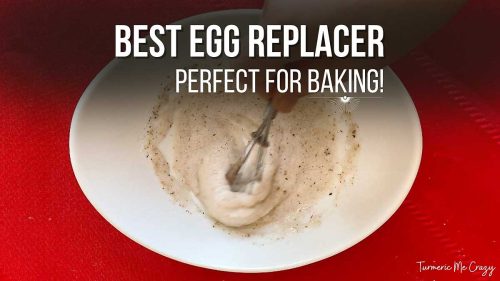

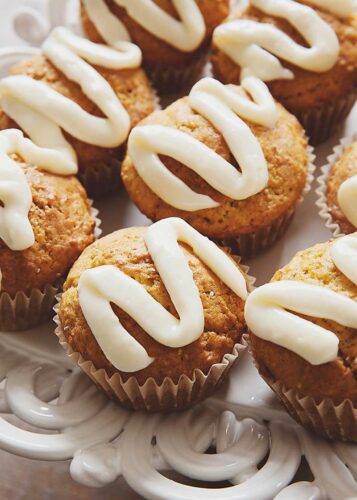
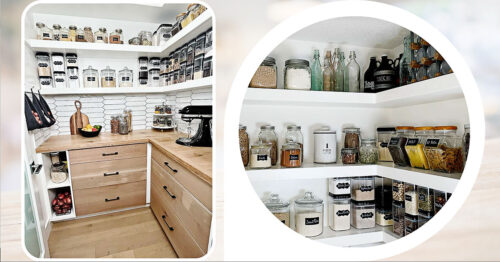
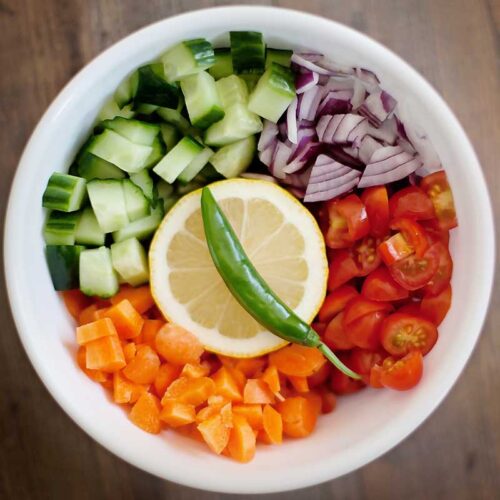
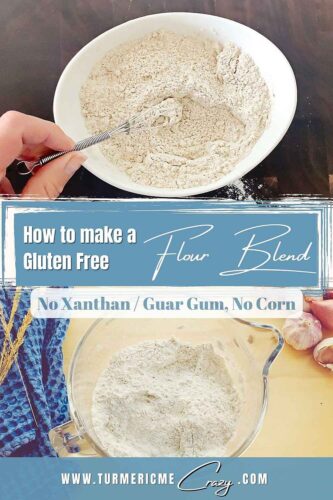
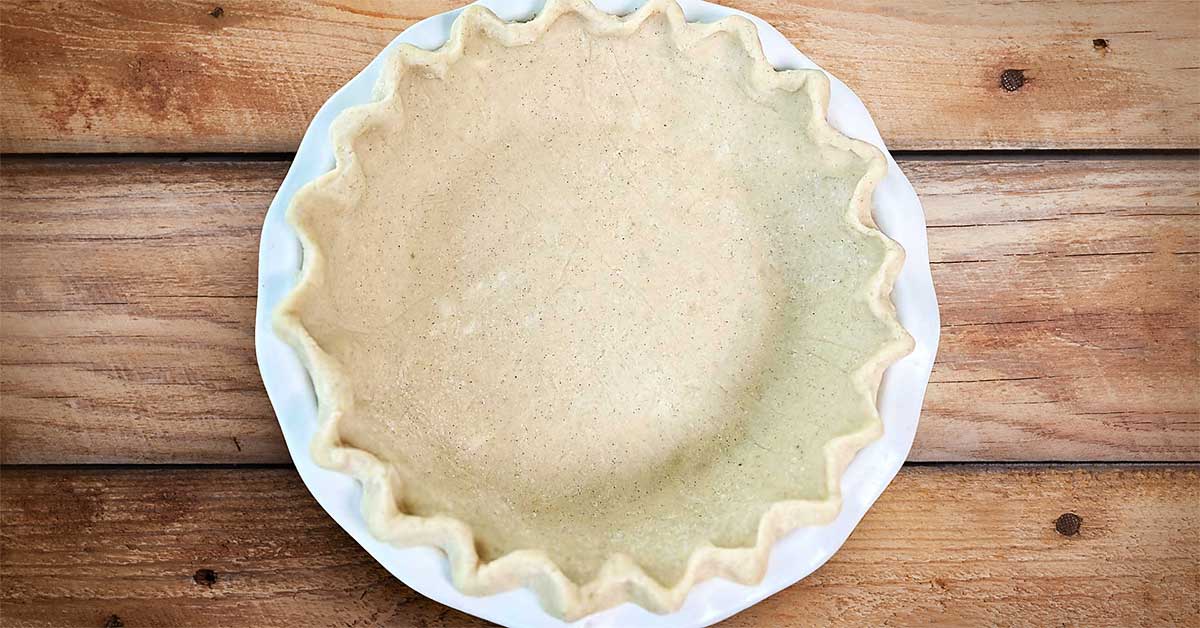
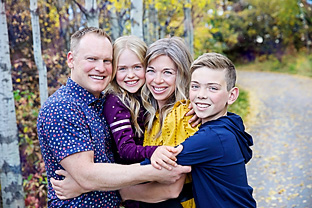

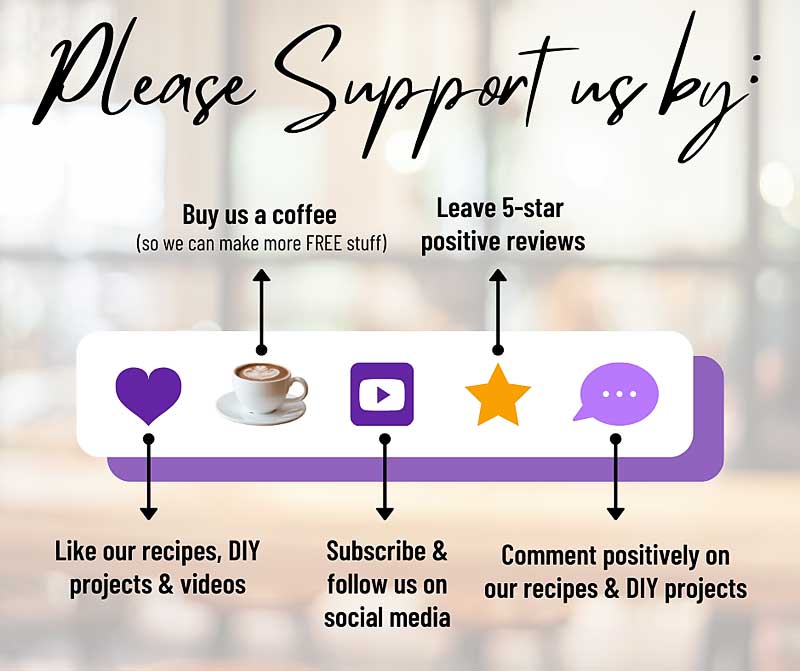









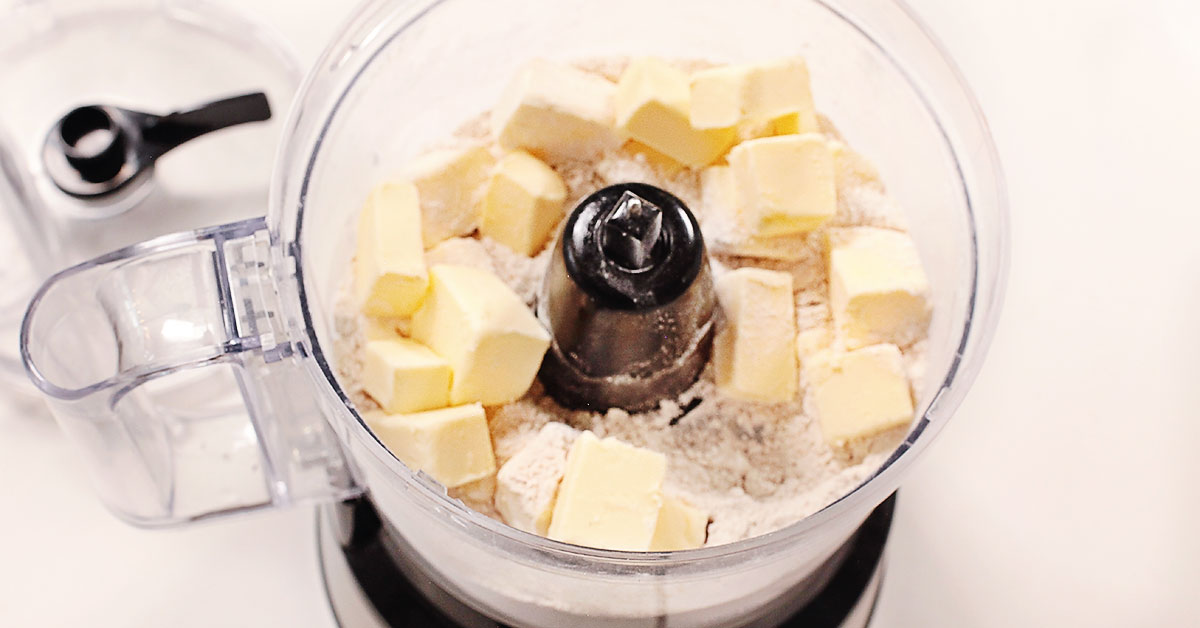
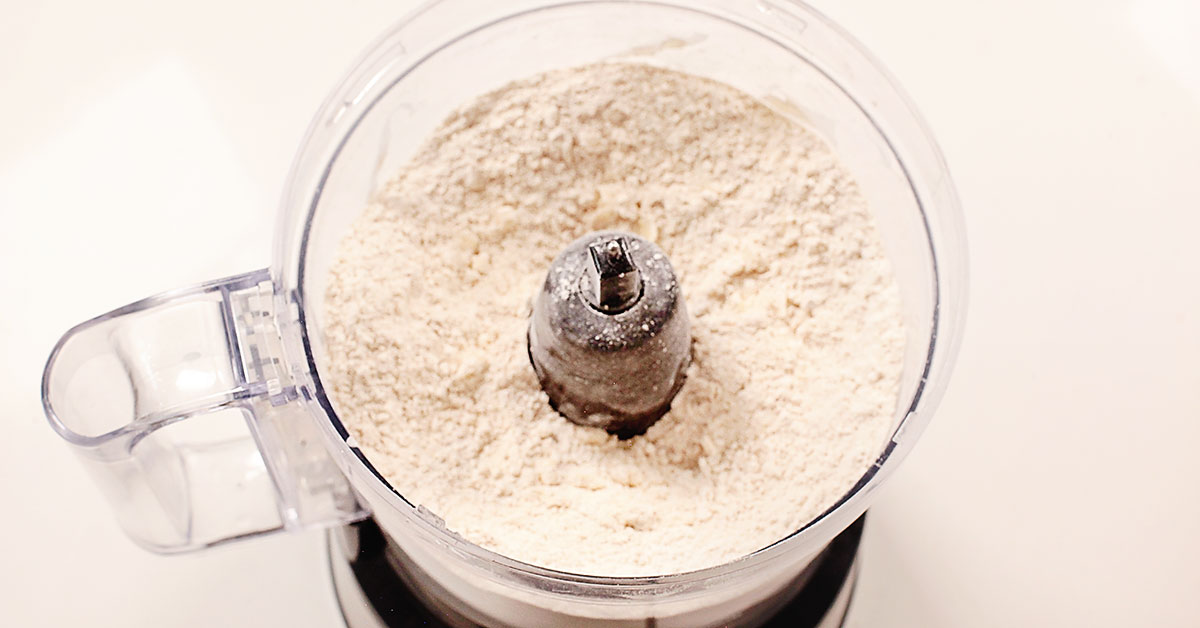
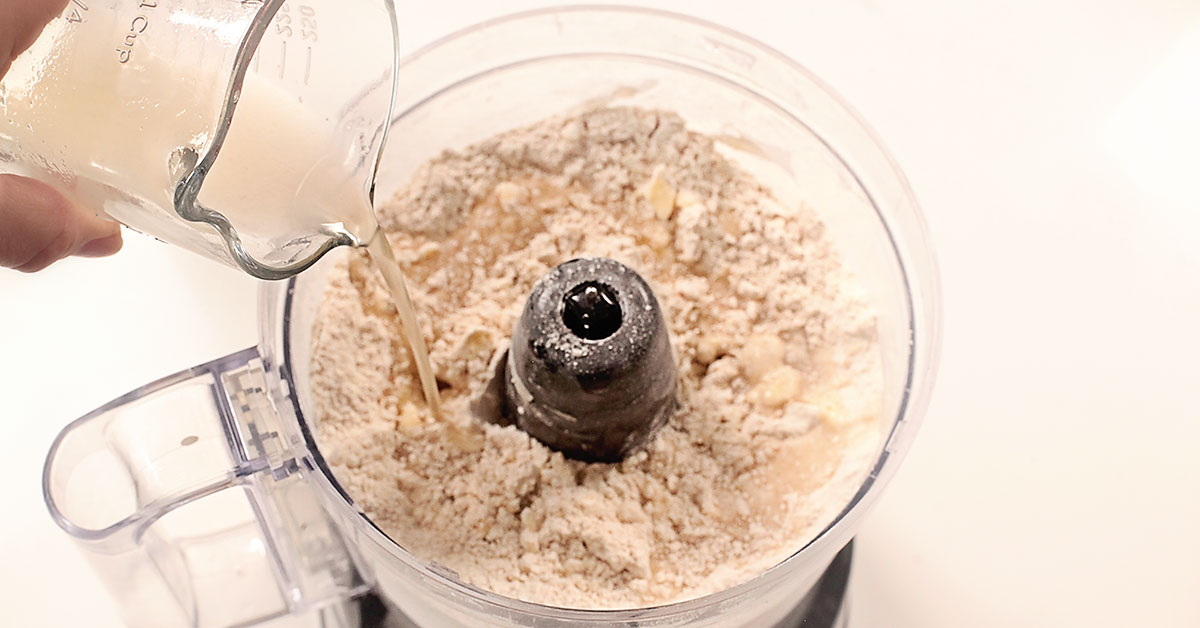
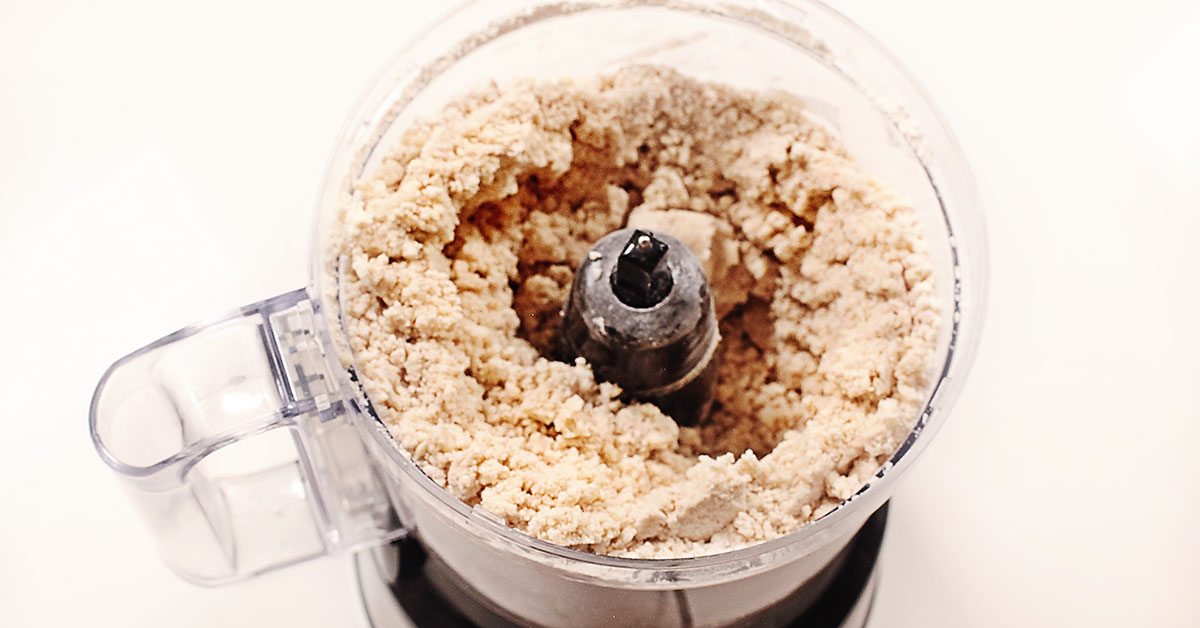
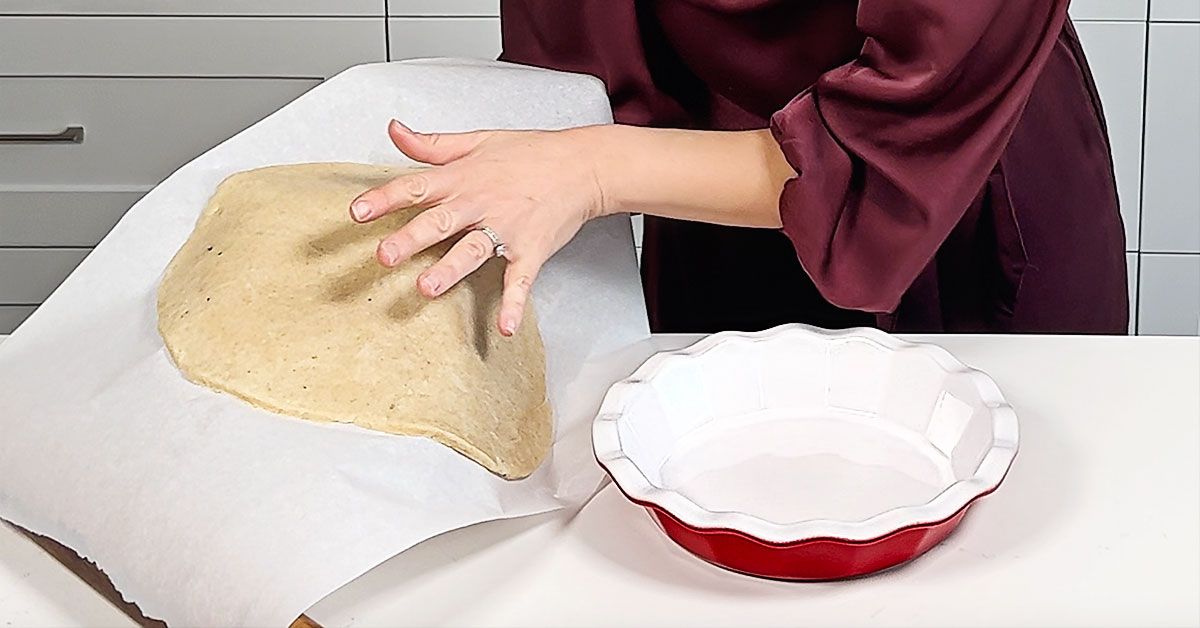
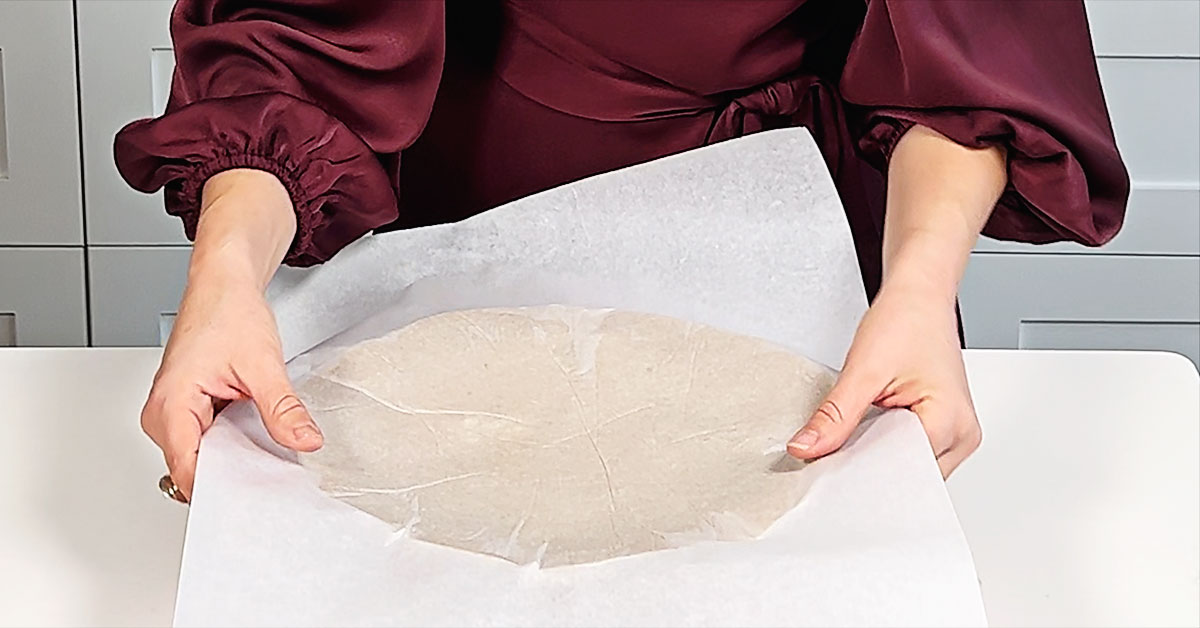
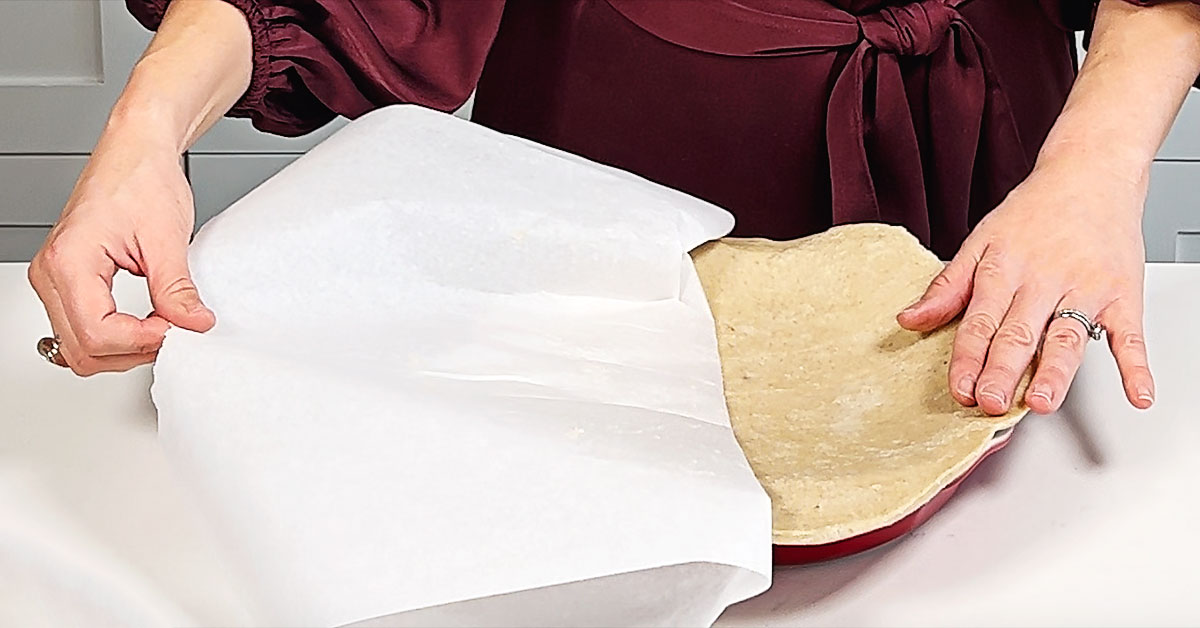
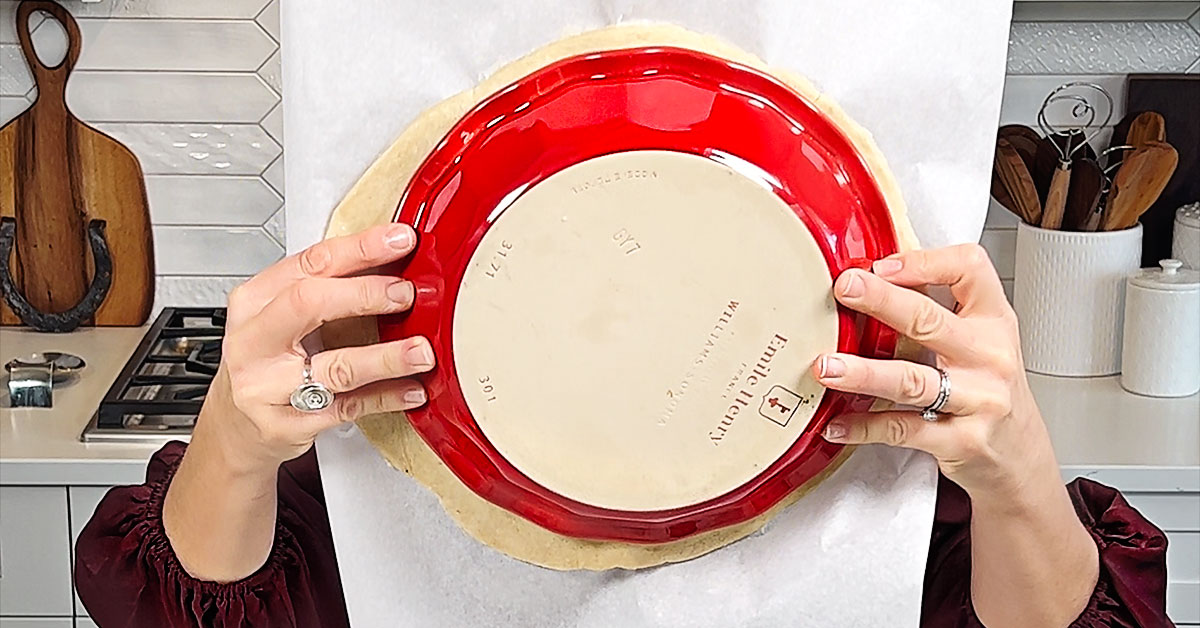
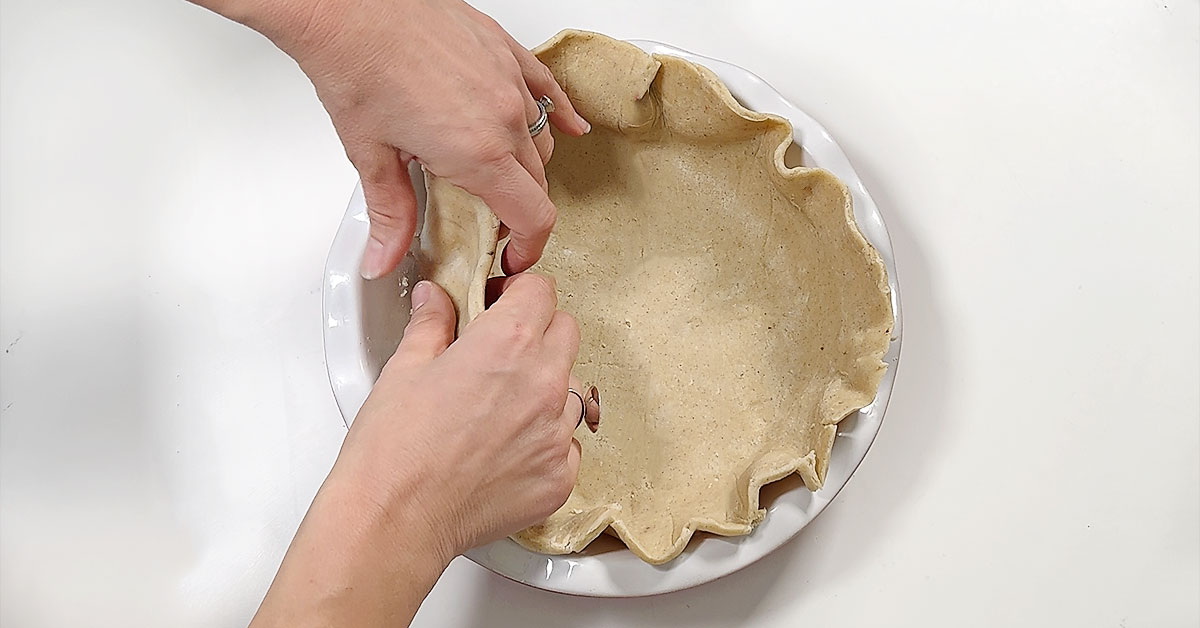
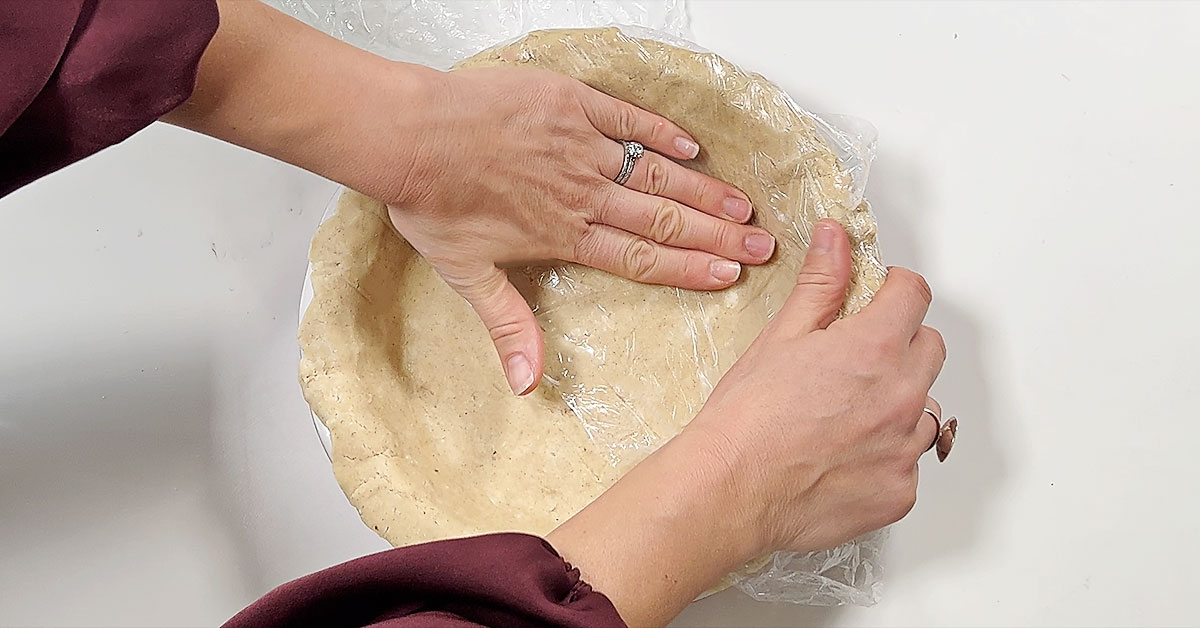
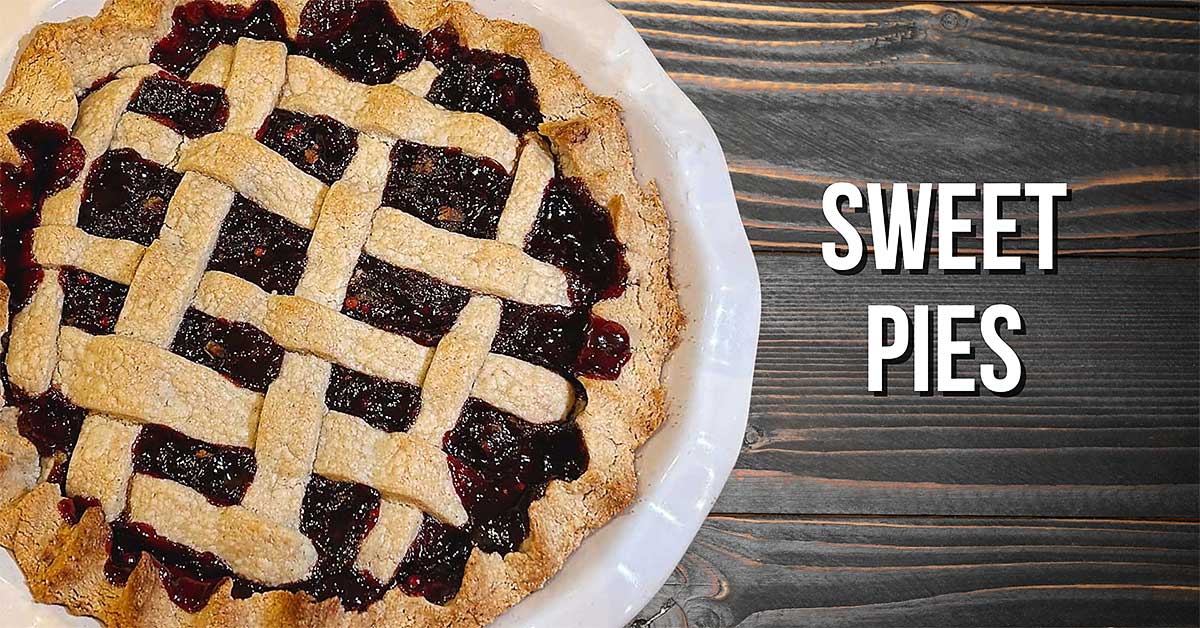
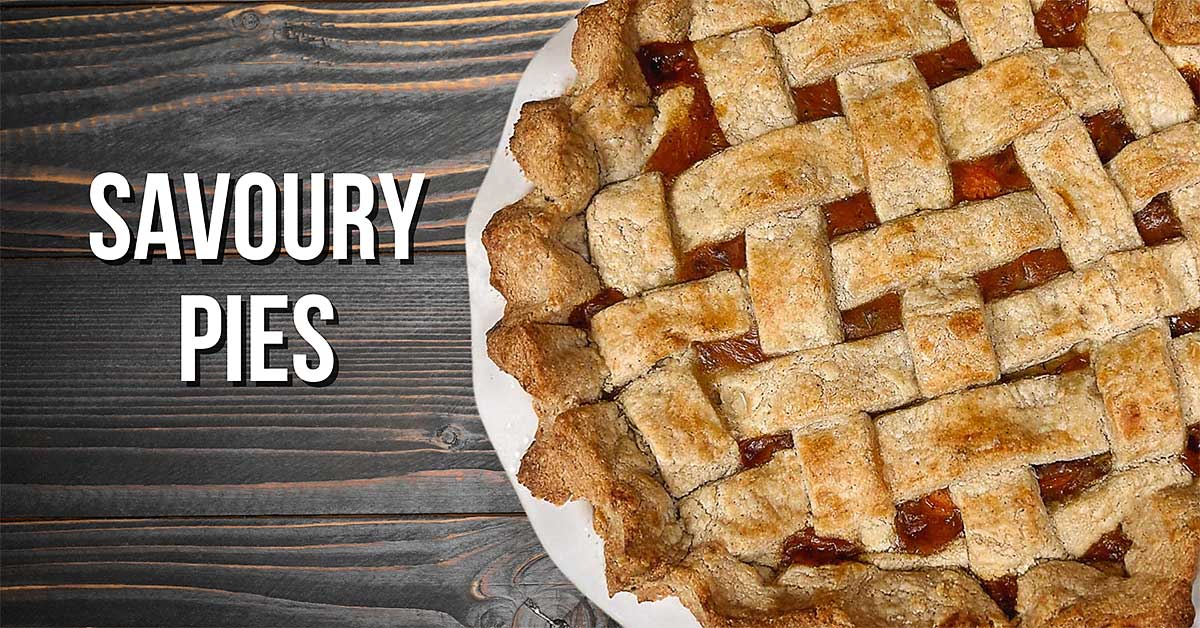
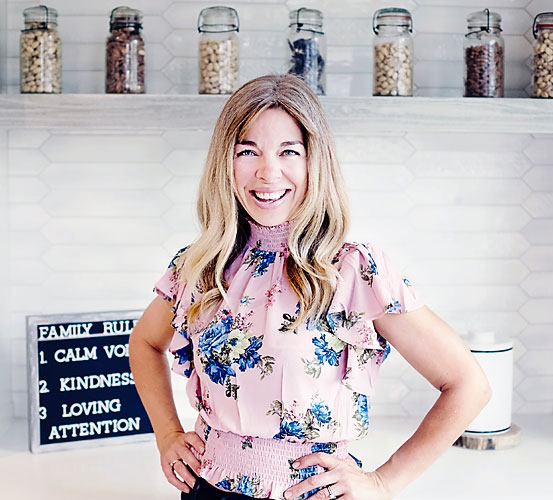
3 Responses
Omg that pie looks and tastes delicious you won’t regret it.
Awe. Thank you ♡!
Give this recipe a try! You won’t regret it I promise. It is so delicious that even my gluten eating family and friends love it ♡! Let me know how you like it.